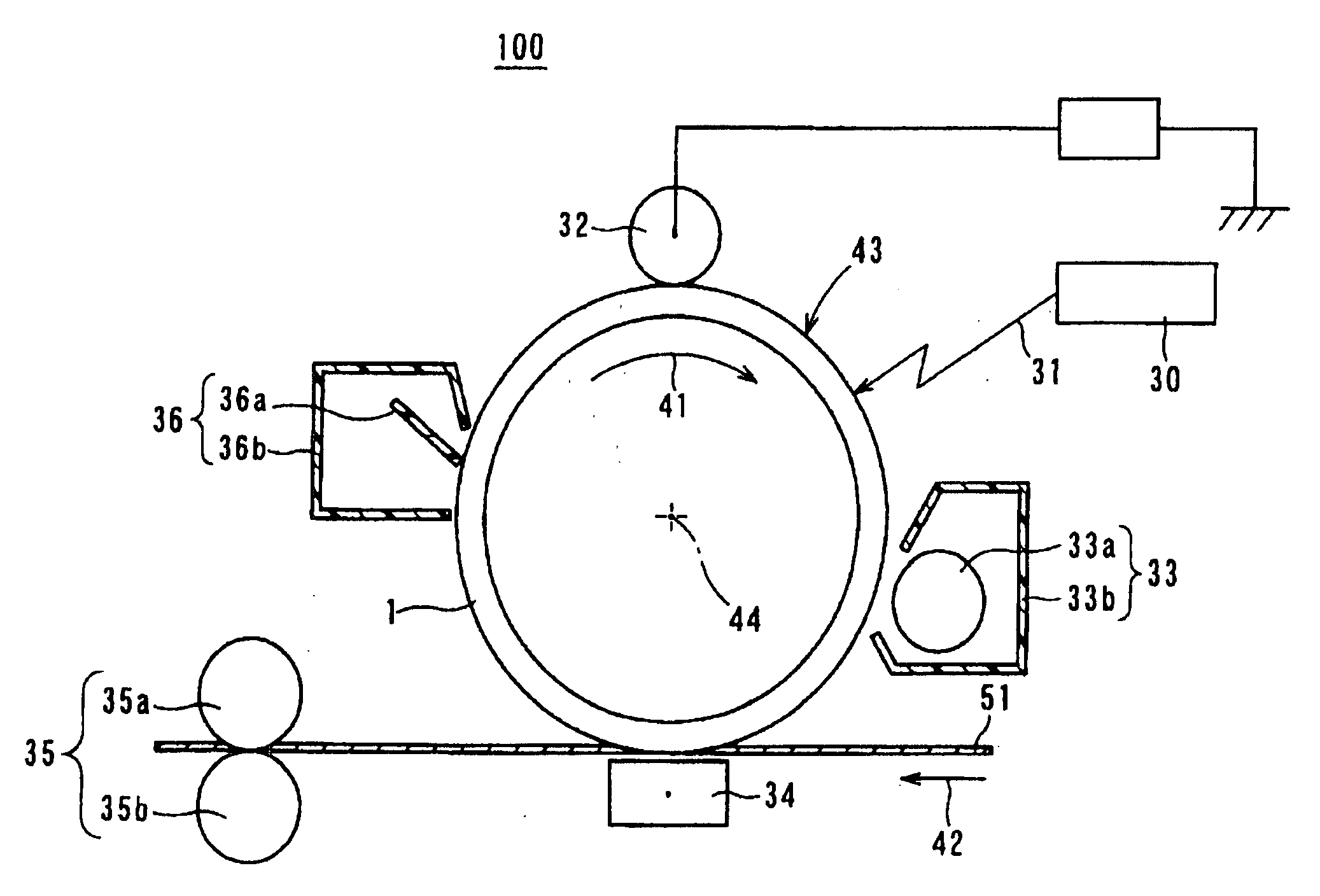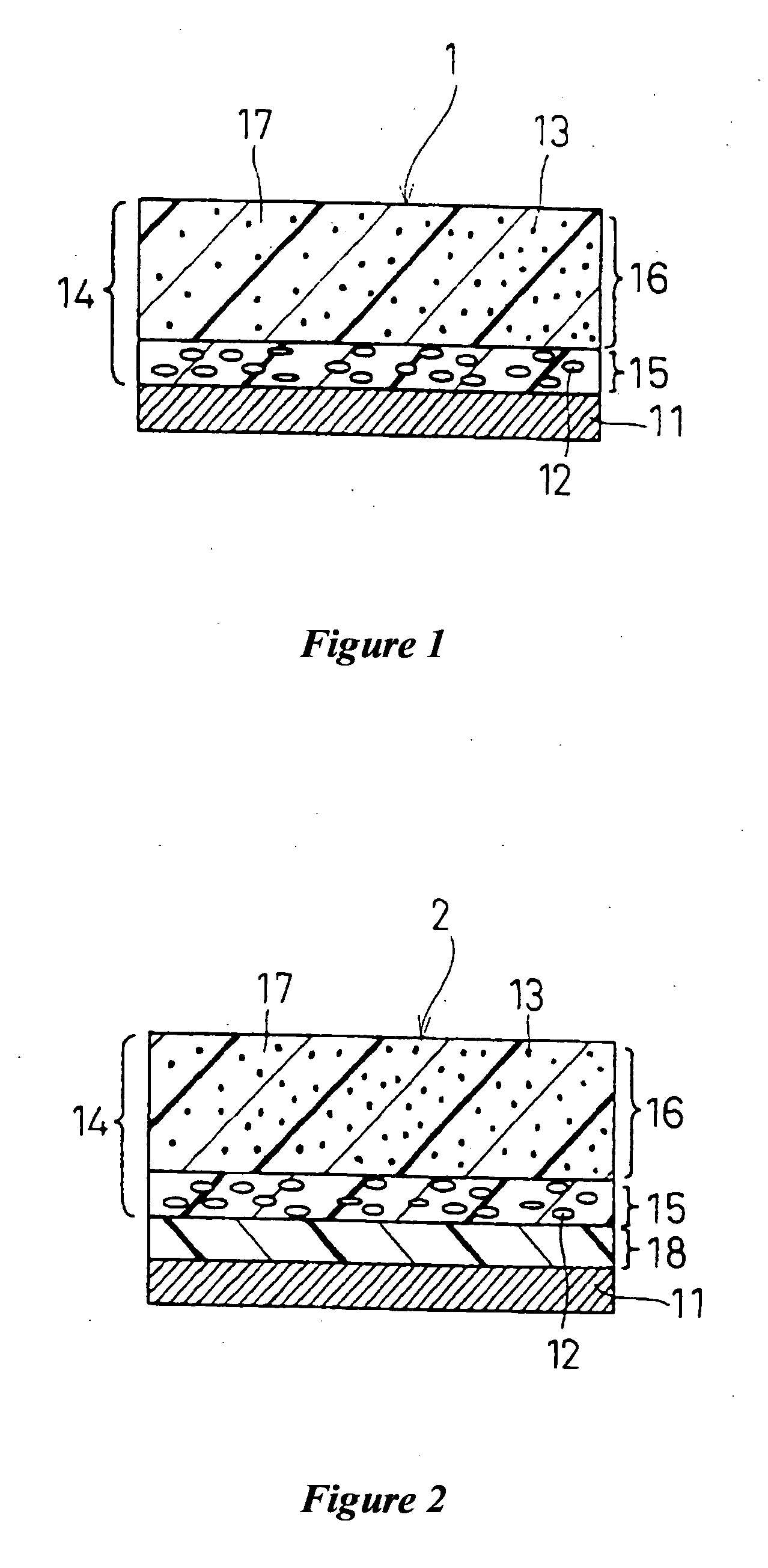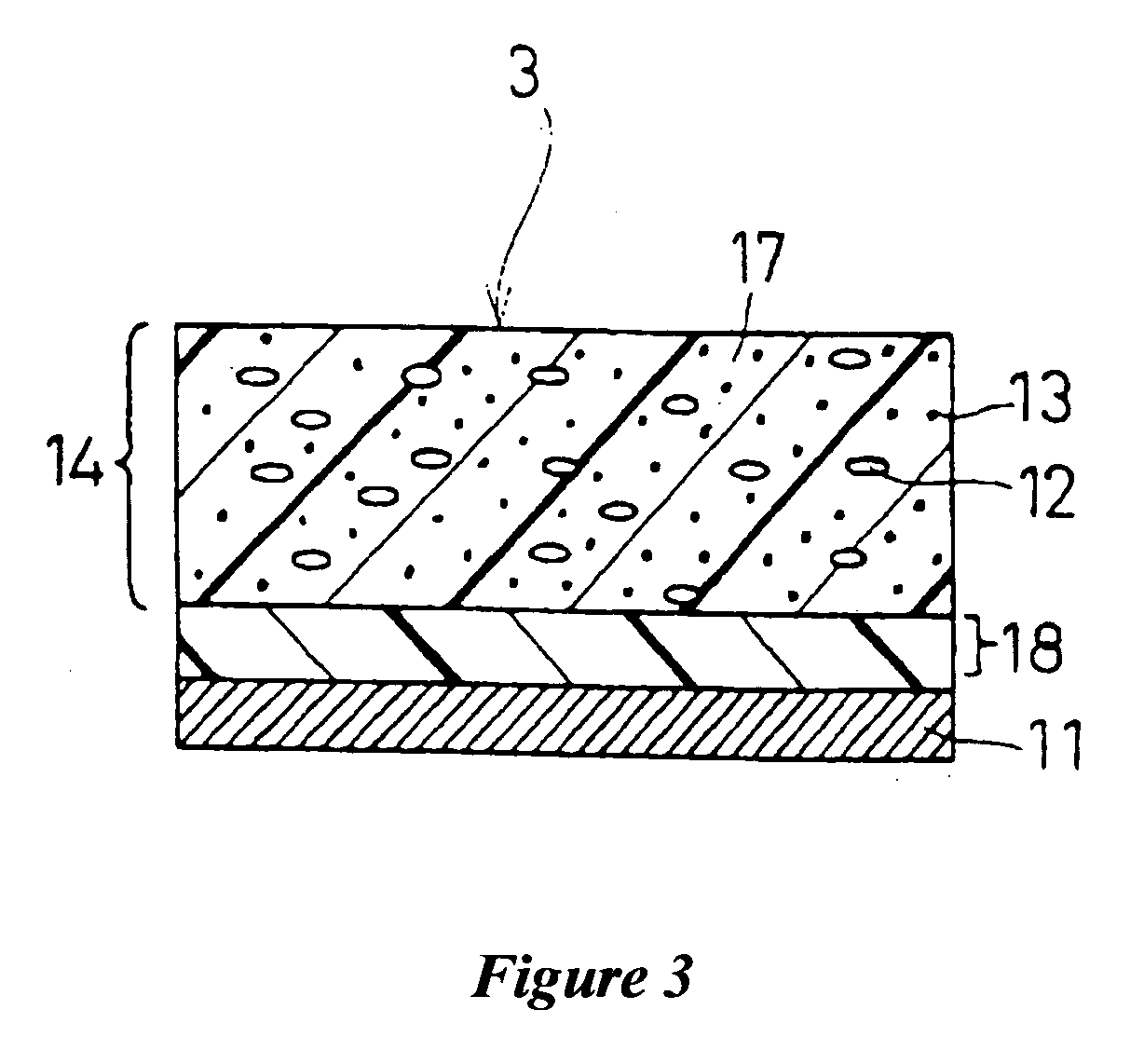Electrophotographic photoconductor and image-forming apparatus
a photoconductor and photoconductor technology, applied in the field of electrophotoconductor and image-forming apparatus, can solve the problems of poor plasticity of the layer, difficulty in forming the photosensitive layer, and inorganic photoconductor, and achieve high charge potential, high reliability, and high sensitivity.
- Summary
- Abstract
- Description
- Claims
- Application Information
AI Technical Summary
Benefits of technology
Problems solved by technology
Method used
Image
Examples
production example 1
Productions of Exemplified Compound No. 1
[0189]From N,N′-diphenylbenzidine and diphenylacetaldehyde, an enamine compound represented by the following formula (7) was synthesized according to the method described in Japanese Patent Publication No. Hei 6 (1994)-348045-A, the disclosure of which is incorporated herein in its entirety by reference for any and all purposes:
[0190]Phosphorus oxychloride in an amount of 5.52 g (1.2 mole equivalents) was gradually added to 100 ml of ice-cold anhydrous N,N-dimethylformamide (DMF) and stirred for about 30 minutes to prepare a Vilsmeier reagent. To the ice-cold Vilsmeier reagent, 20.79 g (1.0 mole equivalent) of the enamine compound was gradually added. Then, the mixture was gradually heated up to 80° C., and stirred for 6 hours while kept at 80-90° C. After completion of the reaction, the mixture was left to cool, and then gradually added to 800 ml of a cold 4 N aqueous sodium hydroxide solution to precipitate the reaction product. The precipi...
production example 2
Production of Exemplified Compound No. 24
[0206]From N,N′-dinaphtyl-3,3′-dimethylbenzidine and diphenylacetaldehyde, an enamine compound represented by the following formula (10) was synthesized according to the method described in Japanese Patent Publication No. Hei 6 (1994)-348045-A:
[0207]Starting from the enamine compound, an aldehyde compound was prepared as described in Production Example 1. The thus obtained aldehyde compound was subjected to LC-MS and element analyses. The analysis data (see below) confirmed that the obtained compound was Exemplified Compound No. 24.
[0208]LC-MS analysis data:
[0209]Purity: 99.2%
[0210]A peak observed at a position corresponding to an MW of 1084.9
[0211](Theoretical MW of the molecular ion [M]+ of Exemplified Compound No. 24: 1084.50)
[0212]Peaks due to the fragment ions observed at positions corresponding to the MWs close to following:[0213]the theoretical MW of 1069 of the fragment ion [M-Me]+, wherein a methyl group is eliminated;[0214]the theor...
production example 3
Production of Exemplified compound No. 3
[0224]From 1-(4-phenylaminophenyl)-4-phenylaminobenzofuran and diphenylacetaldehyde, an enamine compound represented by the following formula (11) was synthesized according to the method described in Japanese Patent Publication No. Hei 6 (1994)-348045-A:
[0225]Starting from the enamine compound, an aldehyde compound was prepared as described in Production Example 1. The thus obtained aldehyde compound was subjected to LC-MS and element analyses. The analysis data (see below) confirmed that the obtained compound was Exemplified compound No. 30.
[0226]LC-MS analysis data:
[0227]Purity: 98.7%
[0228]A peak observed at a position corresponding to an MW of 988.9 (Theoretical MW of the molecular ion [M]+ of Exemplified Compound No. 30: 988.44)
[0229]Peaks due to the fragment ions observed at positions corresponding to the MWs close to the following:[0230]the theoretical MW of 911 of the fragment ion [M-φ]+, wherein a benzene ring is eliminated;[0231]the t...
PUM
 Login to View More
Login to View More Abstract
Description
Claims
Application Information
 Login to View More
Login to View More - R&D
- Intellectual Property
- Life Sciences
- Materials
- Tech Scout
- Unparalleled Data Quality
- Higher Quality Content
- 60% Fewer Hallucinations
Browse by: Latest US Patents, China's latest patents, Technical Efficacy Thesaurus, Application Domain, Technology Topic, Popular Technical Reports.
© 2025 PatSnap. All rights reserved.Legal|Privacy policy|Modern Slavery Act Transparency Statement|Sitemap|About US| Contact US: help@patsnap.com



